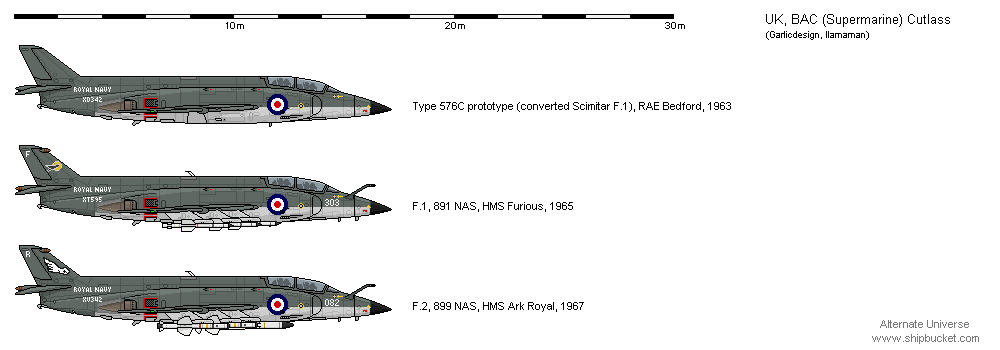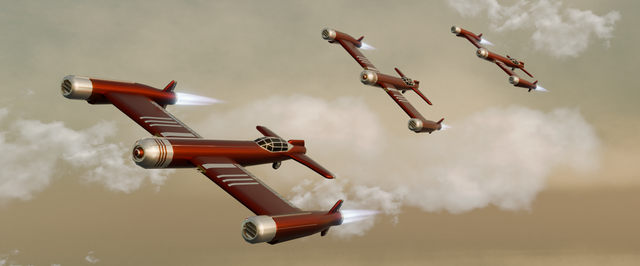HOME | DD
 dave-llamaman — BAC Type 576C Cutlass
dave-llamaman — BAC Type 576C Cutlass

#alternatehistory #au #bac #fanfic #scimitar #supermarine #althistory #shipbucket #britishaircraftcorporation #fdscale #timelinesaga #supermarinescimitar #alternateuniverse
Published: 2020-11-09 21:24:09 +0000 UTC; Views: 7608; Favourites: 46; Downloads: 0
Redirect to original
Description
An improved Sea Vixen replacement was badly needed in the immediate aftermath of the October War. While a significant amount of ex-American kit was arriving in the UK as part of Kennedy’s attempts at mending fences, there was nothing in the American inventory that could replace the Sea Vixen, offer anything like an improvement in performance and still operate from British carriers.
BAC offered a solution in the form of the Supermarine Type 576. This was a series of studies in the late-50s, using the Scimitar as a basis for a series of potential new warplanes. One in particular involved a Sea Vixen replacement with a two-man cockpit, thinner wings and rocket boosters. This would form the basis of what became the BAC Type 576C Cutlass.
Compared to the original, BAC took onboard demands from the Admiralty to “fix all the fucking leaks for Christ’s sakes” and completely replaced the fuel and hydraulic systems. The wing thickness-chord ratio was reduced to 6% outboard of the wing fold to reduce drag and additional area ruling was made to the fuselage for the same reason. Behind the tandem cockpit a fuselage spine saddle tank was fitted that complied with the area rule. The rockets were deleted and the engines replaced with two RB146 Avon 300R reheated turbojets, with the tail strengthened to resist acoustic fatigue that might be caused by the afterburners. Finally the nose was reprofiled to carry an AI.23 radar.
Armament of the Cutlass consisted of two 30mm Aden cannon, plus provision for up to six underwing air-to-air missiles and a centreline drop tank. Denis Healy had authorised the project when he became Defence Minister in March 1963, with the first aircraft (a modified Scimitar F.1) flying in December of that year. Production began in March 1964, but the Cutlass F.1 was not in service before the Persian Gulf situation with the United States flared up in June. Squadrons would be fully formed up by early 1965, however, with one deployed on each of the six carriers capable of accommodating them.
The F.1 was rapidly followed by the F.2, with original aircraft brought up to this standard. The F.2 replaced the RB146 engines with RB147 Avon 400R turbojets, improving fuel consumption and increasing maximum speed to Mach 1.75. The AI.23D radar was fitted, with provision for SARH Mastiff medium-range missiles alongside the de Havilland Red Top.
* * *
You can see the rest of the stuff in this AU here: The October War, 27-10-1962

























